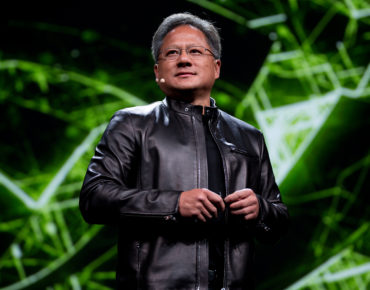At SC18: Nvidia’s Chief Delivers His Vision of HPC Future

Nvidia's Jen-Hsun Huang
For nearly two hours at SC18, Nvidia CEO Jensen Huang presented his expansive view of the future of HPC (and computing in general) as only he can do: Animated.
Backstopped by a stream of data charts, product photos, and even a beautiful image of supernovae, Jensen described an accelerator- and AI-driven transformation of computing in which multi-precision processors, emerging software tools, verticalized stacks, containers, and, of course, Nvidia products, would fuel progress forward. Scale-up and scale-out paths would persist for now, he said, but converge over time with DGX-2 and V100 supporting the former and Nvidia’s new T4 GPU driving the latter. This was vintage Jensen.
Strictly speaking, there wasn’t a lot of breaking news – Google’s decision to deploy Nvidia T4 instances along with roll out of expanded container offering were probably the most prominent items.
While most of the challenges and solution approaches Jensen cited are familiar, he can perhaps be forgiven his enthusiasm. The GPU, more specifically Nvidia GPUs (and CUDA), have been central to HPC’s effort to cope with Moore’s law’s decline. The rise of accelerator-based heterogeneous architectures is clearly evident in recent Top500 lists. Nvidia GPUs were in 127 systems on the newest list, including Summit and Sierra, now the two fastest supercomputers in the world. Likewise, Nvidia’s embrace of mixed precision capabilities, so essential for machine learning and deep learning performance, is evident in the Tensor Core technology it deployed on the Volta100 and T4 GPUs.
Whether by keen foresight or smart opportunism, Nvidia’s bet on GPUs is paying off handsomely. Traditional modeling & simulation and emerging data-driven AI are both increasingly enabled by GPUs. While much remains to be sorted out regarding how these two worlds will work together, at least near-term, heterogeneous accelerator-based systems are the engines for both. Jensen made the case for Nvidia as a first-mover to lead the charge into the new computational order with an eclectic mix of technology discussion and Nvidia announcements spanning HPC performance benchmarks, product market traction, new partner efforts, and praise for open source.
Read the full story here at sister web site HPCwire.
Related
George Leopold has written about science and technology for more than 30 years, focusing on electronics and aerospace technology. He previously served as executive editor of Electronic Engineering Times. Leopold is the author of "Calculated Risk: The Supersonic Life and Times of Gus Grissom" (Purdue University Press, 2016).










